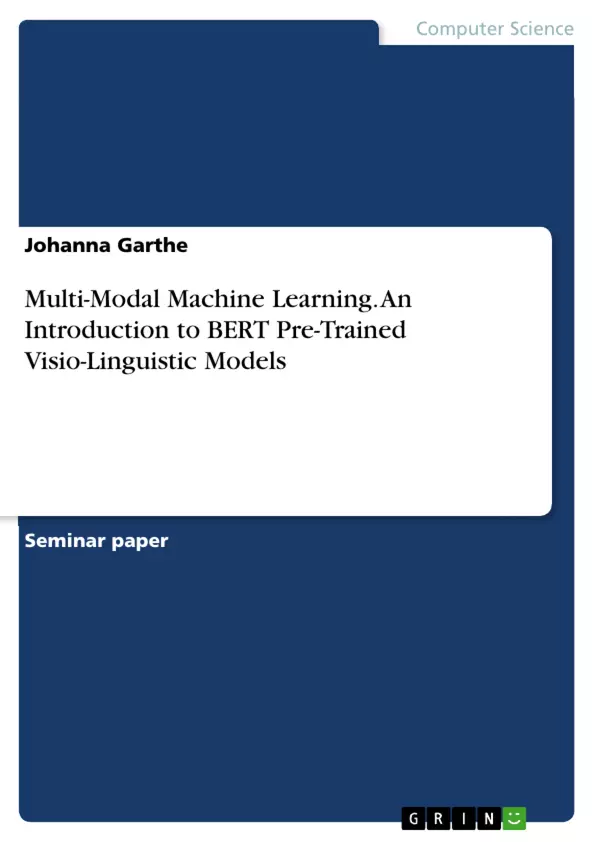In the field of multi-modal machine learning, where the fusion of various sensory inputs shapes learning paradigms, this paper provides an introduction to BERT-based pre-trained visio-linguistic models by specifically summarizing and analyzing two approaches: ViLBERT and VL-BERT, aiming to highlight and discuss their distinctive characteristics. The paper is structured into five chapters as follows. Chapter 2 lays the fundamental principles by introducing the characteristics of the Transformer encoder and BERT. Chapter 3 presents the selected visual-linguistic models, ViLBERT and VL-BERT. The objective of chapter 4 is to summarize and discuss both models. The paper concludes with an outlook in chapter 5.
Transfer learning is a powerful technique in the field of deep learning. At first, a model is pre-trained on a specific task. Then fine-tuning is performed by taking the trained network as the basis of a new purpose-specific model to apply it on a separate task. In this way, transfer learning helps to reduce the need to develop new models for new tasks from scratch and hence saves time for training and verification. Nowadays, there are different such pre-trained models in computer vision, natural language processing (NLP) and recently for visio-linguistic tasks. The pre-trained models presented later in this paper are both based on and use BERT. BERT, which stands for Bidirectional Encoder Representations from Transformers, is a popular training technique for NLP, which is based on the architecture of a Transformer.
Inhaltsverzeichnis (Table of Contents)
- Introduction
- Fundamental Principles
- Transformer
- BERT
- Visio-Linguistic Models
- VILBERT
- VL-BERT
- Discussion
- Outlook
Zielsetzung und Themenschwerpunkte (Objectives and Key Themes)
This seminar paper aims to introduce BERT pre-trained visio-linguistic models by summarizing two recent published approaches, VILBERT and VL-BERT, and discussing their characteristics.
- Multi-modal machine learning
- BERT pre-trained visio-linguistic models
- Comparison of VILBERT and VL-BERT
- Characteristics and functionalities of the models
- Applications and future directions
Zusammenfassung der Kapitel (Chapter Summaries)
- Introduction: This chapter introduces the concept of multi-modal machine learning and its relevance in artificial intelligence, highlighting the importance of integrating various sensory modalities for learning and processing information. It also introduces the specific focus of the paper: BERT pre-trained visio-linguistic models and the models that will be discussed.
- Fundamental Principles: This chapter establishes the foundations for understanding the selected models by explaining the core principles of the Transformer encoder and BERT, two essential components of the chosen models. It provides insights into their architectures and functionalities, preparing the reader for the detailed analysis of specific models.
- Visio-Linguistic Models: This chapter dives into the heart of the paper, presenting the two selected visual-linguistic models, VILBERT and VL-BERT. The chapter highlights the key features, architecture, and pre-training procedures of each model, providing a detailed exploration of their functionalities and capabilities.
Schlüsselwörter (Keywords)
The primary focus of this seminar paper lies on multi-modal machine learning, especially in the context of visio-linguistic models. This includes the analysis of BERT pre-trained models like VILBERT and VL-BERT. The paper examines their architectures, functionalities, pre-training tasks, and potential applications within this specific field. Key terms encompass transformer encoder, BERT, visual-linguistic models, co-attention, and pre-training techniques.
- Arbeit zitieren
- Johanna Garthe (Autor:in), 2021, Multi-Modal Machine Learning. An Introduction to BERT Pre-Trained Visio-Linguistic Models, München, GRIN Verlag, https://www.hausarbeiten.de/document/1431361


